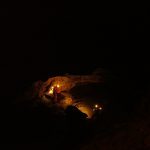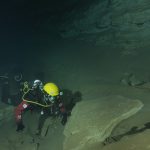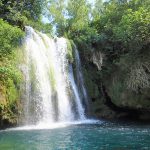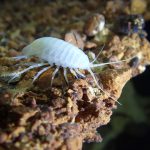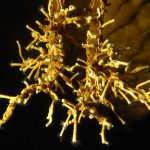Speleology
Speleology is a group of activities with the primary aim of researching the subterranean phenomena of karst: caves, pits, abysses, caverns and more.
The word speleology comes from the Ancient Greek word spelaion, meaning natural underground cavity, and logos, meaning science. Accordingly, the literal translation of the word speleology is the science of underground cavities.
The primary objective of speleological research is to develop speleological maps based on measurements of cave channels and their orientation, and documenting observed geological, morphological, hydrological and other characteristics of these structures. The complexity of caves and pits demands special techniques and training for speleology teams, and the activities of speleologists in deep pits and complex caves can be best described as a type of underground alpinism. In that sense, part of the speleological activities can be considered a sport, like alpinism, and speleology can be observed as a combined sports and scientific activity. Proof that speleology is a synthesis of sport and science was first confirmed in Croatia in 1912 by Umberto Girometta.
Specially trained speleologists participate in speleological research, together with experts and scientists in different branches concerning the processes of speleogenesis, speleomorphology, underground karst hydrology, underground climatology and geophysics (geospeleology), and especially biospeleology, the branch that studies the underground fauna, consisting of a wealth of endemic taxa that are exceptionally interesting due to their isolated conditions.
The first description of speleological structures, prior to the development of modern speleology, was given in 1680 by John Beaumont, who gave a detailed description of the Mendip caves in England.
Though the phrase la spéléologie was first coined by French explorer Emile Riviér, it is his countryman Édouard-Alfred Martel who is considered the father of modern speleology. At the geological congress in Besançon in 1893, he first used this phrase to describe the research of the natural underground environment of subterranean cavities, caves and pits. He described speleology as all activities involved in the research of caves and pits, penetration into these cavities, their interpretation, with the use of all available scientific and technical accomplishments. This phrase was accepted at the congress, and quickly became used worldwide.
In 1905, Dragutin Hirc was the first in Croatia to coin the phrase špiljarstvo (meaning the study of caves), which has been regularly in use since then. The phrase speleologija and its derivations was first used in Croatia by geologist Dragutin Gorjanović-Kramberger in 1912 in the journal Vjesniku geološkog povjerenstva za Hrvatsku i Sloveniju [Journal of the Geological Commission for Croatia and Slovenia], in which as its chairman he published the “Izvještaj speleološkog odbora za 1911. godinu” [Report of the speleology commission for 1911]. Both terms are used interchangeably in Croatia, as they refer to the same activities.
The oldest written record about a cave in Croatia is given in the church list from 1096, referring to the cave in Željina Bay on the island of Ugljan. The first described cave was the Šipun cave in Cavtat, described by Dubrovnik landowner Jakov Sorkočević in 1580 as the Cavtat cave.
Until the end of the 19th century, caves and pits in Croatia were only explored by individual enthusiasts. The first systematic research of caves and the first speleological expedition was organised by the Liburnia Hiking and Tourism Society from Zadar, established in 1899. The first society in Croatia that could be considered speleological was the Committee for Samograd cave in Perušić, established in 1886. Today, there are some 40 speleological societies in Croatia. Some are part of the Croatian Speleological Association, while others are part of the Speleological Commission of the Croatian Hiking Association.
The start of speleological research in the Krka River area were the surveys conducted by Mirko Malez in 1956. The first systematic speleological research in the broader area of Krka National Park was conducted by members of the Croatian National History Museum in Zagreb, and members of the Speleological Section of the Željezničar Hiking Society from Zagreb in 1989 and 1990. This successful cooperation with the Public Institute of Krka National Park continued, and in 1998, the five caves of the Miljacka spring area were surveyed. The Speleological Section of the Sveti Mihovil Hiking Society from Šibenik researched the speleological structures in the broader area of Krka National Park in 2005, 2007, 2009 and 2011. More than 100 speleological structures were surveyed, of which 82 were within the park boundaries. In order to bring the beauty of the underground of the Krka National Park area to the public, and to raise awareness of the need for its protection, the Public Institute of Krka National Park published the Speleological Guide to Krka National Park and the monograph Secrets of the Underground.



